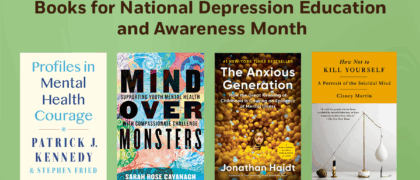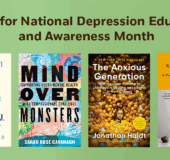Down in the stadium, no one even sees the airplane passing to the north; they are focused on the game below, not the quiet disaster above. The roar of the crowd drowns out the growl of the plane’s engine. By the time the disperse cloud of dust reaches the ground, it’s imperceptible; at two to six microns in size, the spores are smaller than pollen — as many as twenty thousand of them, lined up, would barely stretch an inch. There is nothing to see, and the spores smell of nothing. The spectators, athletes, the billionaire owner in a brief foray out of his skybox — all take the tiny killers deep into their lungs.
Of the 74,000 people attending the game that night, 39,000 are infected. In the surrounding neighborhoods, 150,000 more are infected after inhaling the drifting spores. After the game, the fans go back to their homes. Because it is summer, vacationing families have traveled from all over the country to attend. Over the next day or two, they leave their hotels and return to their homes, scattering across the nation and the world.
The bacterial cells continue to reproduce. After a day or two, many of the victims begin developing a fever and dry cough; some complain of shortness of breath and chest pain. Most of them pop a few Tylenol or Advil and try to ride out the illness. Some see their doctors and are told to take it easy and drink plenty of fluids. Some of the toughest cases show up at emergency rooms. Many patients begin to feel better after a couple of days; only later will they slip back into serious illness.
Within a week of the attack, more than 20,000 people have swamped local hospitals, and the medical establishment and local government are trying to figure out what has happened. The city, even the region, is in utter chaos. Panic has overrun both the government and the medical community. The most susceptible victims rapidly spiral into the agonizing crash of respirator shutdown, with high fever and shortness of breath; many turn blue. Hundreds — only the first hundreds — die. Desperate calls go out for help to the state health department and to the Centers for Disease Control and Prevention in Atlanta. There’s little time to discuss the epidemic, however, because the number of cases quickly overtakes the ability of local hospitals to cope.
As the tenth day after the attack dawns, there are 30,000 sick and 700 dead; by the next day those numbers will have jumped to 38,000 sick and 1,500 dead. Doctors’ offices, clinics, and emergency rooms continue to be overwhelmed with people demanding antibiotic treatment. Once the mysterious attack is identified as anthrax, the Center for Disease Control and Prevention begins to send antibiotics from the national pharmaceutical stockpile.
It’s a help, but the world is not perfect; getting the drugs to people turns out to be a logistical nightmare. With assistance from other city and state officials, overwhelmed public health authorities open storefronts to distribute antibiotics, but there aren’t enough warm bodies to help distribute them efficiently. Many of the people who might be expected to help with this operation are too sick with anthrax even to help themselves, let alone others. Lines at the distribution centers stretch around the block, with angry, frightened people pushing and shoving to get the life-saving drugs. Lines give way to mass unorganized crowds; soon they give way to frightened mob scenes. Several distribution centers have to be shut down after fights turn into riots.
Eventually, 20,000 will lose their lives; it is the worst man-made disaster in the history of the world.
This grim scenario and the mind-boggling estimates of death and illness caused by an airborne terrorist attack might seem outrageous — how, after all, could a single act wipe out as many people as are found in whole towns? But it is, in fact, a middle-of-the-road view of the kind of damage that an anthrax attack might cause. Remember that the Office of Technology Assessment estimated that just a couple of hundred pounds of anthrax spores released on a clear, calm night upwind of Washington, D.C., could kill 1 to 3
million people. This scenario is precisely the kind of case study that policy makers and public health officials are now beginning to give careful consideration.
In fact, many of the elements of the preceding scenario were drawn from a 1999 presentation at a bioterrorism conference sponsored by the Johns Hopkins Center for Civilian Biodefense Studies and the Infectious Diseases Society of America. I served on the planning committee for the conference, and we wanted to lay out in black and white what America could expect if an anthrax release occurred.
Copyright © 2000 by Michael Osterholm, Ph.D., M.P.H., and John Schwartz. All rights reserved. No part of this excerpt may be reproduced or reprinted without permission in writing from the publisher.












